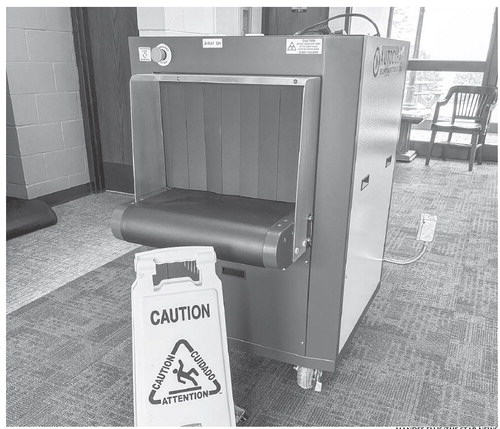Edgar K-12 planning for 2026 referendum
Voters in the Edgar School District will likely be asked to approve another operational referendum in November of 2026, which would keep the district from having to make nearly $1 million in budget cuts.
At the school board’s annual budget hearing last week Wednesday, district bookkeeper Morgan Mueller said the district is entering the fourth year of the operational referendum adopted in 2022, which allowed the district to exceed its revenue limit by $950,000 on an annual basis. That authorization would need to be renewed for the 2027-2028 school year if the district wants to maintain its current budget, she said.
“If we didn’t pass it, we’d have to find a way to cut $950,000,” she said.
Superintendent Cari Guden said the district will formally start referendum discussions with the public in February or March of 2026, with the goal of having the school board pass a resolution in August of next year in order to put a referendum question on the November ballot. If the referendum were to fail in April, the district could come back in April of 2027 to ask again for additional money.
Board member Megan Wesolowski wondered whether the referendum should also focus on capital projects, such as upgrading security at the district’s school buildings. Guden said the district is looking into applying for a grant to cover those costs, but if that doesn’t come through, they could be rolled into an operational referendum.
2025-2026 budget
At the annual meeting held after the budget hearing, district residents in attendance approved a tentative property tax levy of $2.1 million for the 2025-2026 school year, which would represent a 25 percent increase in taxes owed to the district over 2024-2025. Electors also set a tentative mil rate of $6.25 per thousand dollars of property value, an increase of $1.17 (or $117 per $100,000 of property value) over last year.
These numbers will not become final until the end of the October, after the district learns how much equalized property values have increased over the past year and how much state aid will be allocated to the district. For the sake of last week’s budget hearing, Mueller estimated a 2 percent increase in property values and nearly $6 million in state aid for 2025-2026.
If the final mil rate approved in October were to stay the same as what was approved last week, it would represent a significant jump over this past school year, when the district collected $5.08 per thousand dollars of property value. The year before that, though, the rate was at $6.24, creating a one-year drop of 18.5 percent.
“We did know that was coming,” Mueller said, noting that a mil rate of around $6.25 will likely be the “new normal” going for- ward.
Board president Corey Mueller said the goal is to keep the year-to-year changes in taxes as level as possible.
“As long as we stay somewhat consistent, I think that’s what taxpayers would like,” he said.
Board members reviewed several of the factors that go into determining the annual budget, including enrollment, which is projected to drop by 21 students in 2025-2026, from 576 to 555.
“We are looking at some smaller class sizes going through our elementary,” Guden said. “There’s one small class in the middle school as well.”
Board member Rebecca Normington noted that the district’s enrollment has gone down by a total of about 75 students over the past 10 years.
“That feels like a lot for a little school,” she said. “Is there a reason we know about, other than people having fewer kids?”
Mueller said declining enrollment is a statewide problem, and with the exception of Marathon City, it’s affecting neighboring districts as well. Lack of affordable housing and business development were cited as possible reasons.
Guden said enrollment is “one of the big key components” affecting the district’s annual budget, as the state’s funding formula is based in part on the number of full-time equivalent (FTE) students attending classes in Edgar. She noted that four-year-old kindergarten students, even though they attend class full-time, are only counted as .6 FTEs in the formula “Maybe someday that will change, but that’s just the way it is right now,” Guden said.
When it comes to open enrollment, 76 students living outside the district are projected to open-enroll into the district next year, while 66 district residents are expected to open-enroll out, creating a plus-10 net total for the district. The gap continues to close between inbound and outbound students, but Guden said most of those attending class in other districts never enroll in Edgar schools, likely because their parents bring them to districts where the parents work.
Mueller also pointed out the $325 per student allowable increase in revenue granted for all districts, which was extended for the next 400 years due to a partial veto by Gov. Tony Evers in 2023 that was recently upheld by the Wisconsin Supreme Court.
“Without that, this year we’d be in a very sore situation,” she said, noting that it could still be changed during current budget negotiations. “It’s still up for debate.”
State aid will make up about 60 percent of the district’s general fund budget next year, with about the same percentage (57) being spent on salaries and benefits as part of the roughly $9.9 million budget, according to district figures.
Mueller also explained the financial impact of the state’s private school voucher program, which allows families within certain income limits to pay for tuition at private schools using tax dollars. The district can levy more tax dollars for students using vouchers, she said, but a portion of the district’s state aid goes to the private schools.
“That’s not outlined on the tax bill,” Normington said. “People don’t know that, so their tax bills are higher and they think we’re getting more money than we are.”





